There are dozens of great books about Liverpool. There are a few less useful ones too, so I want to help you find the absolute best, and skip the duds.
The books here are ones I think give the greatest amount of information, don’t overlap too much with other books, and are a really good read.
I’ve tried to provide a link to the publisher, and their shop if there is one, plus links to Hive (which helps local bookshops in your area) and Amazon. By clicking on the latter two links, Historic Liverpool might get a little cut of the profits from the sale.
Below the recommended books is a more comprehensive Bibliography, covering many more of the books I’ve used in researching this website.
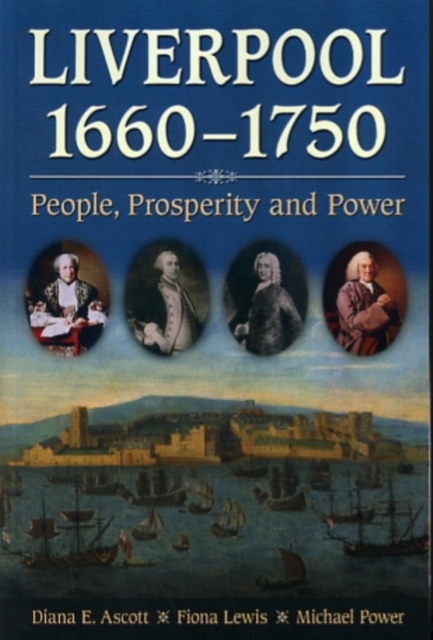
Liverpool, 1660-1750 : People, Prosperity and Power
Liverpool was unique among English towns in the rate of its commercial development from the late seventeenth century.
Liverpool, 1660-1750 provides the first significant detailed published study of the social and political structure of the town during this crucial period.
The authors utilize a number of methodological approaches to early modern Liverpool, using parish registers, probate material and town government records to consider the characteristics of marriage, birth and death in a fast-growing and mobile population; the occupational structure, family lives and connections of workers in the town; and the political structures and struggles of the period.
It is hoped that this book will provide a stimulus to further investigation of Liverpool’s early and precocious eighteenth-century growth.
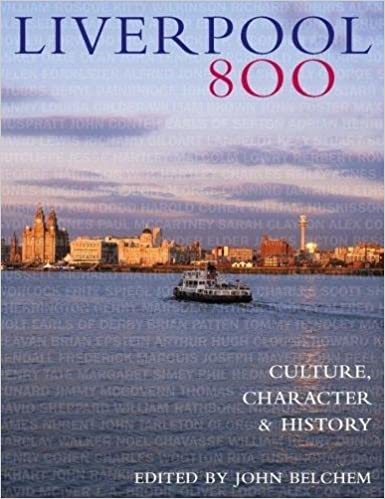
Liverpool 800: culture, character, history
Liverpool celebrated its 800th anniversary in 2007, and was European Capital of Culture in 2008. As the city reinvents itself and looks forward, it is also learning from its past.
Liverpool 800: Culture, Character & History is written by a team of experts, using the latest historical research to explore the citys distinctive culture and character. This is a path-breaking biography of the city, tracing its society, politics, economy and culture over eight centuries. Fully illustrated and powerfully written, it offers new perspectives on a true World City, as it works to make its future as extraordinary as its past.
The books publication will become a centrepiece of the 800 the anniversary Liverpool Year of Heritage celebrations in 2007. Ranging widely over politics and government, famous and infamous personalities, domestic lives and global connections, and culture both high and low, Liverpool 800 offers a warts and all portrait of a city which has inspired contempt (a black spot on the Mersey) and adulation (the centre of consciousness of the human universe) but rarely indifference.
Elegantly designed and including over 300 illustrations, many of which have never been published before, Liverpool 800 is a superb anniversary celebration of a great city and its people.
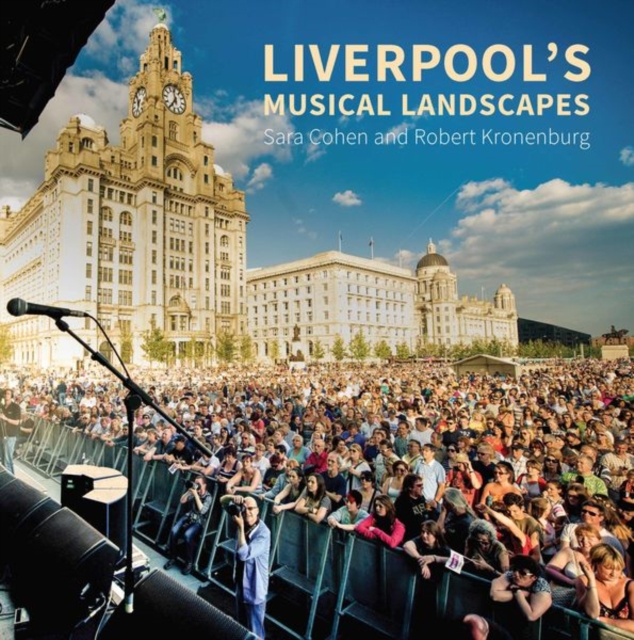
Liverpool’s Musical Landscapes
Liverpool has gained a national and international reputation for popular music, most recently recognised in its designation as a UNESCO City of Music.
This book examines Liverpool’s popular music through the history of the places where it has been performed and examines their role and significance.
In doing so it highlights music’s contribution to the city’s history and identity, and in turn shows how the city’s architectural and urban form has shaped its musical life
It also highlights the significance of places that enable people to come together and collectively participate in music events.
With a glossary of artists and venues, previously unpublished photographs, illustrations and music maps.
Liverpool’s musical landscapes are investigated in unprecedented detail and depth.
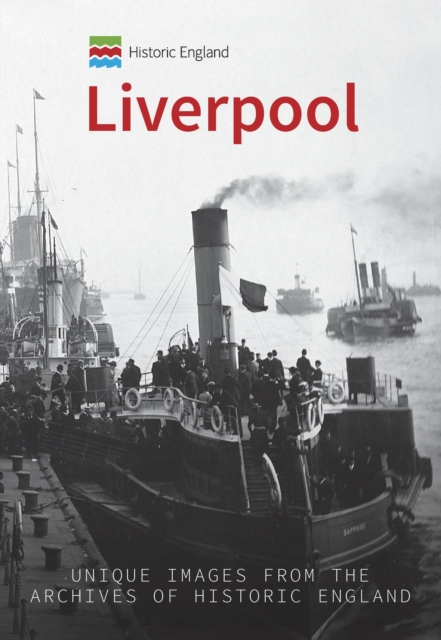
Liverpool : Unique Images from the Archives of Historic England
This illustrated history portrays one of England’s finest cities.
It provides a nostalgic look at Liverpool’s past and highlights the special character of some of its most important historic sites.
Pictures date from the earliest days of photography to the present and cover subjects from Bronze Age burials and medieval churches to cinemas and seaside resorts. Historic England: Liverpool shows the city as it once was, from its streets and alleyways to its vast docks.
Special emphasis is given to aerial views that demonstrate the changing townscape of the city and the setting of its buildings.
Liverpool truly is one of the country’s great cities and this book will help you discover its rich and colourful history.
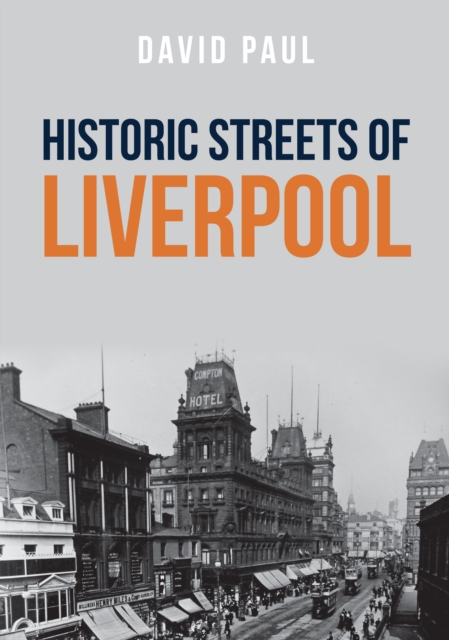
Historic Streets of Liverpool
The thriving city of Liverpool has become particularly well known over the last century for its maritime industry, contributions to sport and, of course, its legendary musical heritage.
However, this city has a history that stretches back hundreds of years, right back to the early thirteenth century when it was formed as a borough by King John in 1207.
It was soon after this that Liverpool’s first streets were constructed.
These historic streets, at the very heart of the city, are steeped with heritage and tales of Liverpool’s captivating past. Author David Paul takes readers around Liverpool’s oldest streets, providing insight on their initial development, how they have changed and the construction of notable buildings.
He lets the reader in on the secrets that these streets have held for hundreds of years in this thoroughly researched book, which is accompanied by both historic and full-colour illustrations of each location.
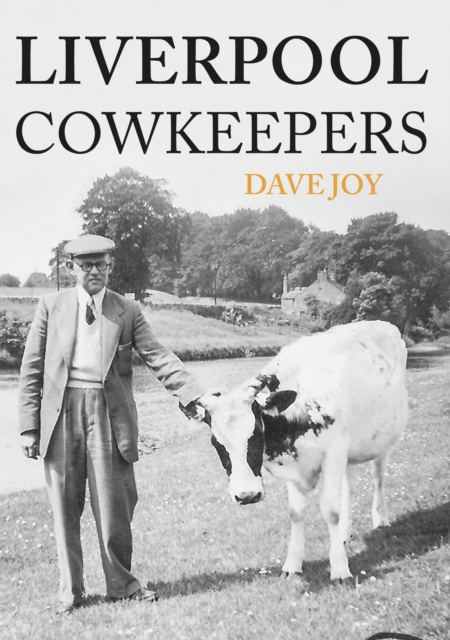
Liverpool Cowkeepers
The mid-1800s witnessed a mass exodus from the Pennine ‘Dales’ as the then latest generation of farmers and miners sought a new life in the New World.
However, many of these found a new life for themselves a bit closer to home – they became Liverpool cowkeepers, keeping cows in their back yards and selling milk to a rapidly expanding city population with an insatiable need for fresh food. The Liverpool cowkeepers became part of the life and economy of the city and continued to serve its people for over a hundred years.
They started out as farmers, adapted to become city cowkeepers and then adapted again to become suburban milkmen – part of the best doorstep food delivery service in the world and a key part of the British way of life. Dave Joy draws on his own family history to tell the story of the lives and times of the Liverpool cowkeepers.
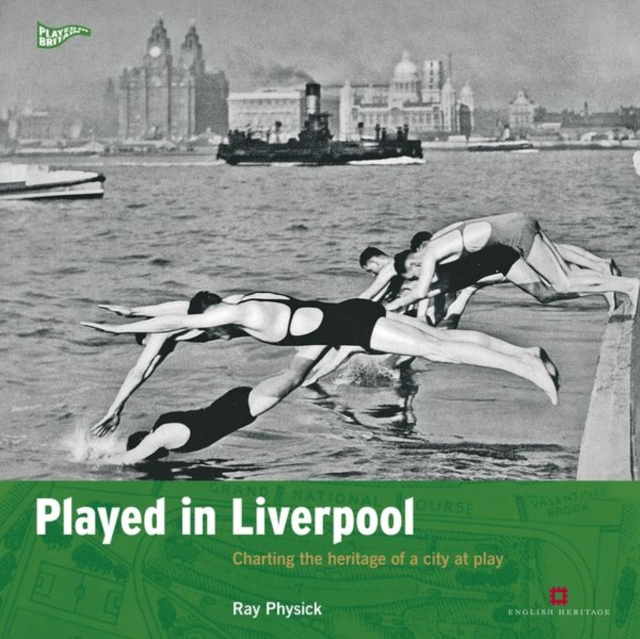
Played in Liverpool
Becher’s Brook at Aintree, the legendary Kop at Anfield, the 18th tee at Hoylake – just three hallowed Liverpool landmarks on the map of international sport.
In Played in Liverpool, social historian Ray Physick guides the reader on an intimate tour of the city’s lesser known sporting treasures; from the site of the 19th century Liverpool Olympics on Mount Vernon and the dockside location of Britain’s first municipal swimming baths, to the football giants Liverpool and Everton confronting each other across the expanse of Stanley Park.
Vast offices belonging to the likes of Littlewoods, Vernons and Zetters housed the headquarters of the British football pools industry. Among the old gymnasiums of Little Italy and the Victorian Lads Clubs of Toxteth – the famous Florrie Institute to name but one – lie the seeds of a thriving, bruising boxing scene. On the Mersey we sail in the wake of intrepid swimmers and rowers.
Hold on to your bobble hats for a story that has never been told.

Liverpool Blitzed
The Liverpool of early September 1939 was a thriving port and bustling city of over 800,000 people. World War Two changed this forever Between the 27th June 1940 and the 10th January 1942 Hitler’s Luftwaffe rained down death and destruction on the city, reducing many fine buildings to either burntout shells or piles of rubble. During the first week of May 1941 alone the raids killed 1,453 people and seriously injured around another thousand.
The intervening 70 years have seen the city undergo drastic changes: docks that no longer have ships berthed there, terraced streets that have been cleared to make way for modern housing and grand old buildings that have been demolished in the name of progress. For many people wartime images of Liverpool are almost unrecognisable, such is the facelift the city has undergone.
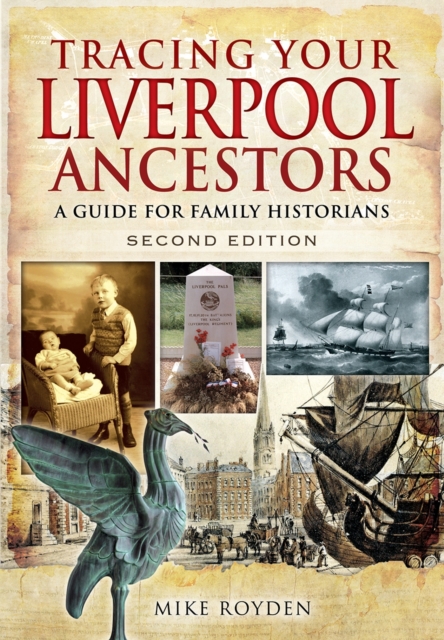
Tracing Your Liverpool Ancestors
This updated second edition of Tracing Your Liverpool Ancestors gives a fascinating insight into everyday life in the Liverpool area over the past four centuries.
Mike Royden’s highly readable guide introduces readers to the wealth of material available on the city’s history and its people.
In a series of short, information-packed chapters he describes, in vivid detail, the rise of Liverpool through shipping, manufacturing and trade from the original fishing village to the cosmopolitan metropolis of the present day.
Throughout he concentrates on the lives of the local people and on their experience as Liverpool developed around them.
He looks at their living conditions, at poverty and the labouring poor, at health and the ravages of disease, at the influence of religion and migration, at education and the traumatic experience of war.
His book is a valuable tool for anyone researching the history of the city or the life of an individual ancestor.
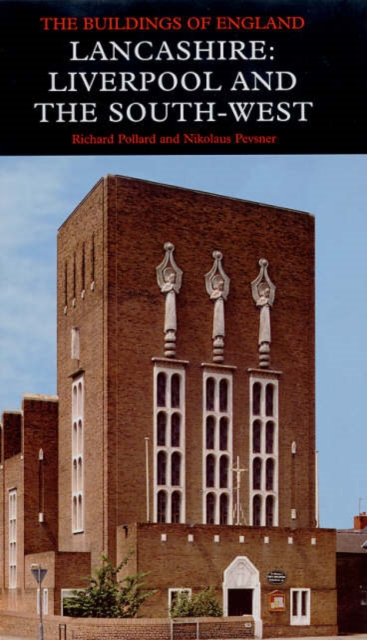
Lancashire: Liverpool and the South-West
This comprehensive guide to the buildings of South-West Lancashire treats each city, town, and village in a detailed gazetteer.
The great port city of Liverpool dominates, with its cathedrals, mighty commercial buildings and warehouses, and Georgian inner city.
Full accounts are also given of the suburbs and industrial towns beyond.
But most of the area remains rural, and in this distinctive landscape are found such memorable buildings as Sefton church, Speke Hall, and the Georgian country houses of Knowsley, ancestral seat of the Earls of Derby, and Ince Blundell, with its extraordinary Neoclassical sculpture gallery.
Numerous maps and plans, color photographs, indexes, and an illustrated glossary complete this volume.
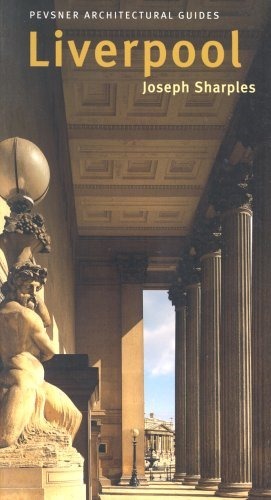
Liverpool: Pevsner City Guide
This comprehensive, full-color guidebook describes all the architecturally significant buildings in Liverpool, the city selected as European Capital of Culture for 2008.
The book includes suburban areas of interest and excursions to notable sites farther out.
Major buildings-such as the Town Hall, St George’s Hall, and the two Cathedrals-receive extended treatment; the streets of the business district are dealt with alphabetically; and the rest of the city-including the docks-is covered in a series of carefully planned walks. Based on Nikolaus Pevsner’s original text for the Buildings of England, the book is augmented by close study of Liverpool’s buildings themselves and by extensive new research.
It is an authoritative work of reference as well as a practical handbook for visitors and residents walking in the city.

Ghost Town: A Liverpool shadowplay
Liverpool is a city of ghosts. Through the centuries, millions have lived here or come to find a new life, and found safe harbour.
More than any other city in Britain its history resonates in the buildings, landscapes and stories that have seeped into the lives of its inhabitants. In Ghost Town, Jeff Young takes us on a journey through the Liverpool of his childhood – down back alleys and through arcades, into vanished tenements and oyster bars, strip tease pubs and theatres.
We watch as he turns from schoolboy truant into an artist obsessed with Kafka, Terence Davies and The Fall.
Along the way he conjures ghosts and puts hexes on the developers who’ve ruined the city of his dreams. Layering memoir, history, photography and more this is a highly original approach to this great city.
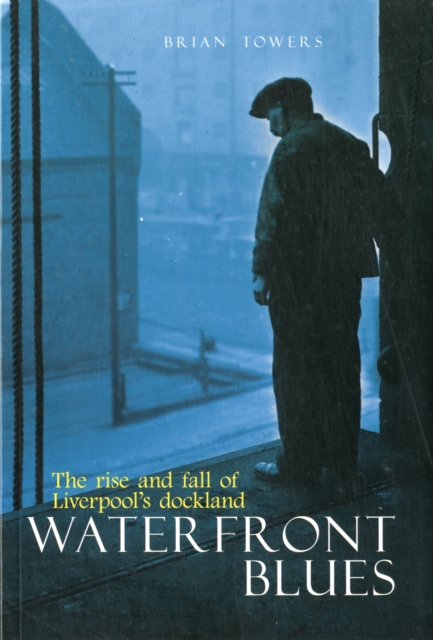
Waterfront Blues: The rise and fall of Liverpool’s dockland
This book tells the real story about Liverpool’s docklands and the people who lived and worked there.
Set against the background of Liverpool’s unique urban experience, the author sets out to tell what conditions were actually like in one of the world’s largest and most important seaports. Sometimes, this makes for harrowing reading. There was poverty and poor housing. There was massive over-crowding, and the town grew at such a rate that public health in the poorer districts was among the worst in the world.
Employment on the docks was far from secure. Until quite recently workers had to stand by twice a day hoping to be picked for that half-day’s work. This casual system of hiring brought no security whatever, and dockers were at the whim of the employer as well as at the mercy of trade depressions or even the weather. Not surprisingly there were strikes and industrial disputes, to which the employers’ and the government’s response was often harsh and uncompromising. At one low point the Royal Navy’s HMS Antrim was photographed at anchor in the Mersey ‘at readiness’ to respond to any trouble from the striking dockers.
Brian Towers was uniquely well placed to write this book. He was a professor of industrial relations whose family roots were as seamen based in Liverpool. His perspectives and insights recreate way of working and life that have now been largely lost.
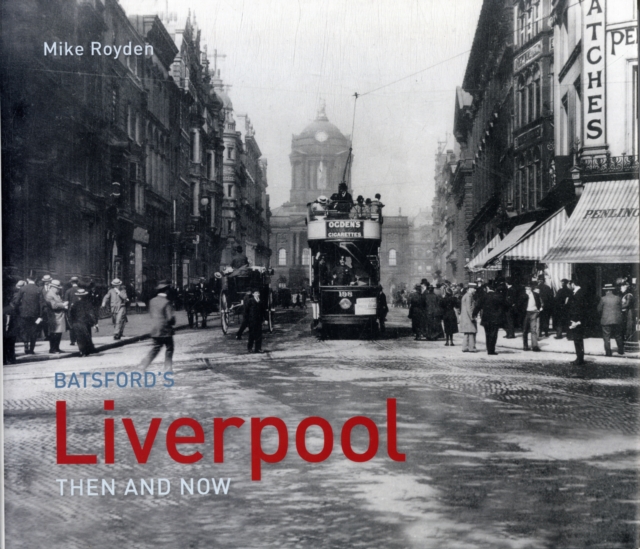
Liverpool Then and Now
Liverpool Then and Now takes the reader on a journey through a city once considered the ‘second city of empire’.
So great was the volume of commerce flowing through the port of Liverpool in the nineteenth century that it sometimes eclipsed London.
This wealth produced many fine buildings, giving rise to a second Bank of England building, the classical architecture of St George’s Hall and Liverpool’s ‘three graces’; the Liver, the Cunard and the Port of Liverpool buildings. Some 70 historic photographs of Liverpool’s past are paired with specially commissioned contemporary views taken from the same vantage point.
You can see the same streets and buildings as they were ‘then’ and as they are ‘now’.
It includes Lord Street, Albert Dock, Speke Airport, Goodison, Aintree, Lime Street Station, the Mersey Tunnel, plus the ferry across the Mersey and the place where it was famously celebrated in song, The Cavern.
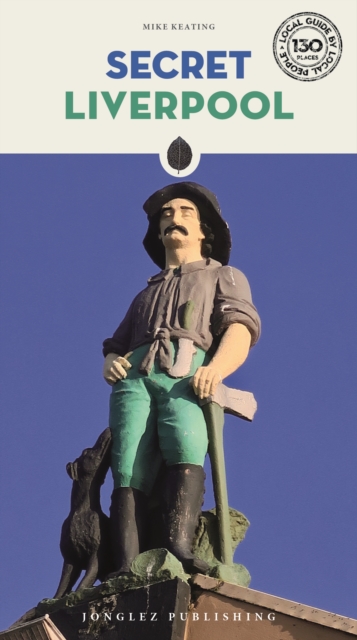
Secret Liverpool
Let Secret Liverpool guide you around the unusual and unfamiliar.
Step off the beaten track with this fascinating Liverpool guide book and let our local experts show you the well-hidden treasures of an amazing city. A brand-new guide, Secret Liverpool features 130 secret and unusual locations.
Discover for yourself the haunts of slave traders, privateers and press-gangs, the hideaway of a suspected assassin and the desecrated grave of a self-professed Jack the Ripper, track down the birthplace of rail travel and the oldest pavilion at a first-class cricket ground, marvel at a lifesize replica of the world’s first submarine and the original home of the Epsom Derby, be gobsmacked by burial stones older than Stonehenge and one of the earliest human settlements to be found anywhere in the UK, take a turn on John Lennon’s first musical instrument and snigger at the sight of Queen Victoria’s dildo, meet toads that sing, World War II’s best-kept secret and the world’s first (and smallest) skyscraper, toast the UK’s greatest female athlete in a brew named in her honour or go for a spin on the only purpose-built F1 race track in the country.
Don’t miss – Each chapter of this Secret Liverpool travel guide book corresponds to a different part of the city so that one can always find a hidden or secret place to discover.
Perfectly planned walks – Make sure that you do not miss any Secret location, by discovering each one featured in this guide by planning a walking tour of each part of the city.
Bibliography
The books above are my favourites, and the ones I’d recommend you read to get the broadest overview of the history of Liverpool. But when you want to dig a little deeper, perhaps look more closely at one topic or don’t mind something a little more academic in tone, there are many more to look at.
I’ve used the books in the following lists during my research into this website. Some of them a pretty old, others are expert volumnes, but I think all have fascinating insights into the city’s past. I’ll add to the list as time allows, and when I find new sources.
General History
Aughton, P., 1993, Liverpool: A People’s History, Carnegie Publishing, Preston.
Belchem, J., (ed), 2006, Liverpool 800: Culture, Character & History, Liverpool University Press, Liverpool.
Farrer, W., & Brownbill, J., 1907, The Victoria History of the County of Lancaster, vol. iii, Archibald Constable, London.
Hayes, C. (ed), 1991, Stories and Tales of Old Merseyside, Book Clearance Centre, Standish, Wigan.
Picton, J.A., 1875a, Memorials of Liverpool, Historial and Topographical, including the history of the dock estate, vol. i: historical, G.G. Walmsley, Liverpool.
Picton, J.A., 1875b, Memorials of Liverpool, Historial and Topographical, including the history of the dock estate, vol. ii: topographical, G.G. Walmsley, Liverpool.
Pye, K., 2007, Discover Liverpool, Trinity Mirror Sport Media, Liverpool.
Stonehouse, J., 2002, The Streets of Liverpool, Liverpool Libraries and Information Services, Liverpool. (Reprint of an 1869 original)
Archaeology
Barrowclough, D., Brennand, M., Chitty, G., Clare, T., Edwards, B., Lewis, J., Longworth, C., Lund, J., McNeil, R., Newman, R., Philpott, R., Quartermaine, J., & Woodcock, S., 2004, North West Archaeological Resource Framework, Museum of Liverpool Field Archaeology Section.
Cowell, R.W., & Philpott, R.A., 2000, Prehistoric, Romano-British and Medieval Settlement in Lowland North West England: Archaeological excavations along the A5300 road corridor in Merseyside, NMGM, Liverpool.